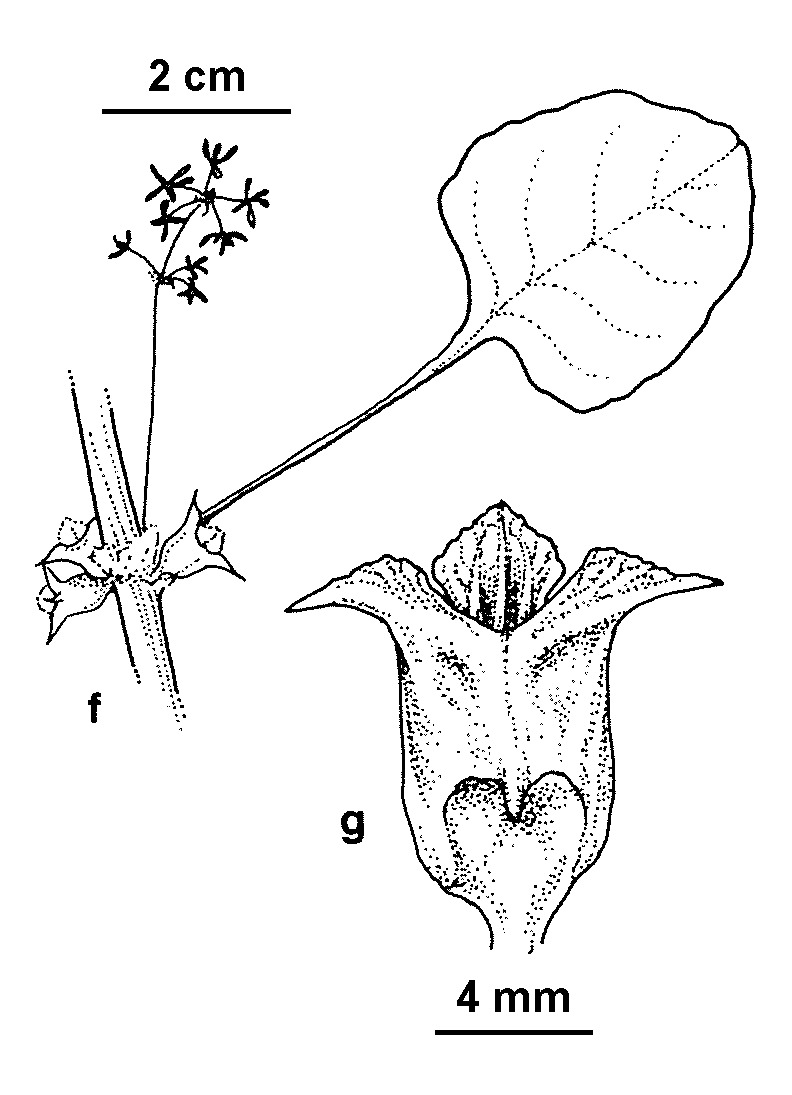Emex australis
Steinh. DoublegeeProstrate or decumbent, somewhat fleshy herb with stems spreading for c. 50 cm from a basal rosette. Leaves ovate to broadly oblong, 2–8 cm long, 1–5 cm wide, obtuse at apex, truncate or shallowly cordate at base; margins often undulate and/or crenate; petiole normally longer than lamina. Male inflorescences c. 2–7 cm long; perianth segments c. 2 mm long. Female flowers subsessile, fruiting perianth 7–11 mm long, 4–6 mm wide at the widest point (just below the spines), the sides broadly ribbed and indented, with a basal concavity, spines slender, spreading to c. 10 mm diam., inner segments c. 3 mm wide at apex of tube, rounded, with a short apical mucro, reticulate. Nut ovate, broadly trigonous below, triquetrous toward the acute apex, 4–5 mm long, brown, smooth, retained within the woody fruiting perianth. Flowers most of year, mainly Apr.–Nov.
LoM, MuM, VVP, VRiv, MSB, RobP, MuF, GipP, OtP, WaP. Naturalized all mainland States. Native to southern Africa. Moderately common in north-western Victoria on road verges and irrigated cropland, occasional in heavier loamy soils in the vicinity of lakes and watercourses (e.g. Lake Hattah, Murray River floodplain). Sporadic elsewhere, e.g. near Melbourne, Geelong and Bairnsdale areas, possibly spreading by contaminated seed or hay.
A serious agricultural weed in Western Australia and South Australia. There are some reports of this species hybridizing with the less common E. spinosa (Parsons & Cuthbertson 1992).
Walsh, N.G. (1996). Polygonaceae. In: Walsh, N.G.; Entwisle, T.J., Flora of Victoria Vol. 3, Dicotyledons Winteraceae to Myrtaceae, pp. 272–295. Inkata Press, Melbourne.
 Spinning
Spinning

